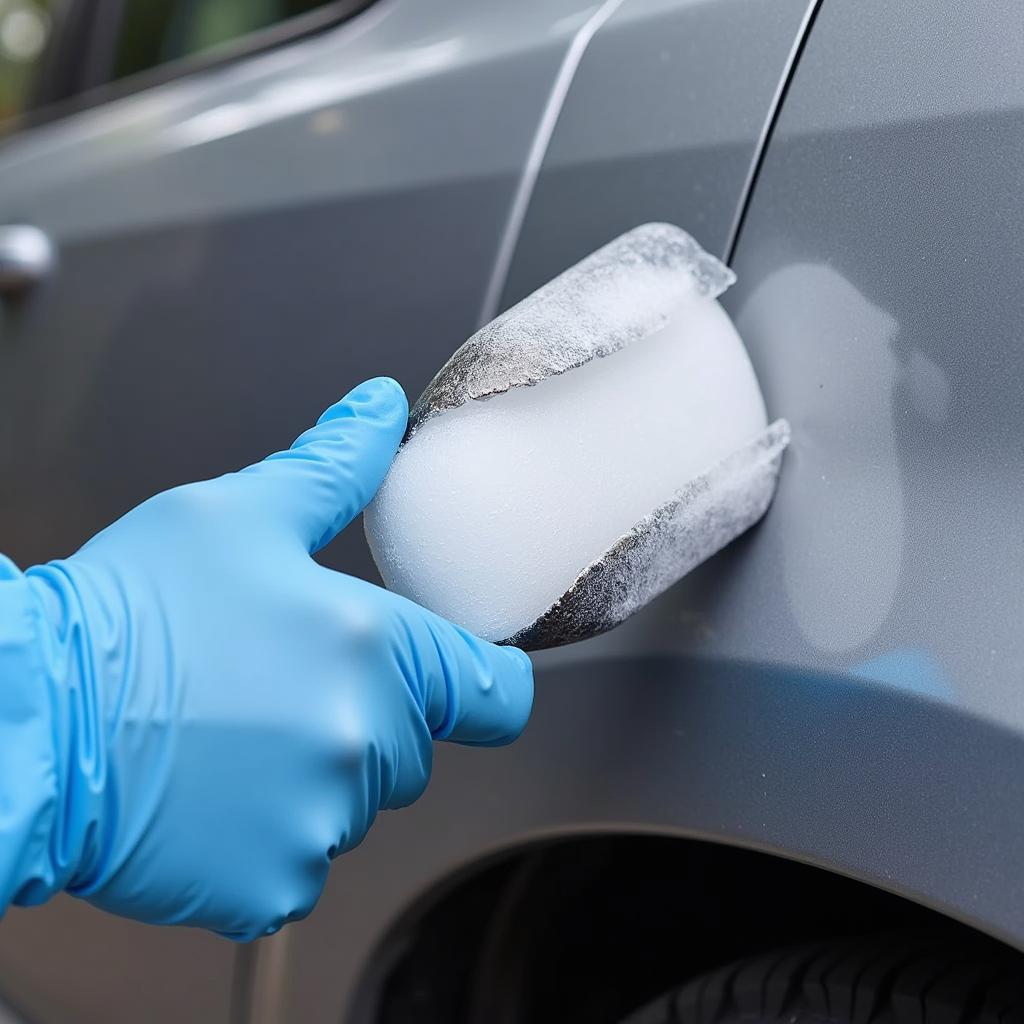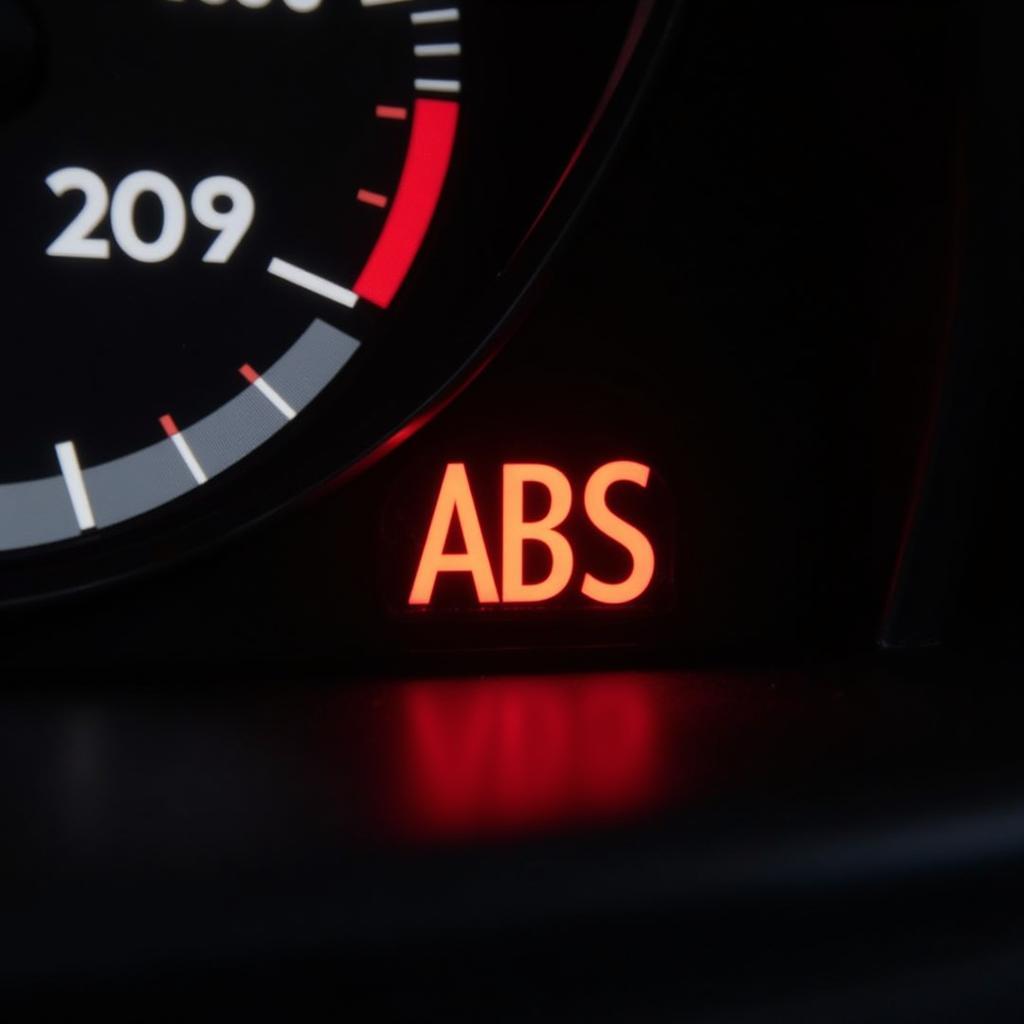Fixing paint runs on a car can seem daunting, but with the right approach, it’s a manageable DIY project. Whether you’re a seasoned car enthusiast or a novice, this guide will provide you with the knowledge and steps needed to achieve a smooth, professional-looking finish. We’ll cover everything from identifying the cause of paint runs to the techniques and tools required for a flawless repair.
Fixing those unsightly drips and sags, also known as How To Fix Paint Runs On A Car, is crucial for maintaining your car’s appearance. Many factors, including incorrect paint viscosity, applying too much paint at once, or even environmental conditions, can cause paint runs. Understanding these factors helps prevent future mishaps. Let’s dive into the details of how to tackle this common car painting issue.
Understanding Paint Runs and Their Causes
Before you start fixing paint runs on a car, it’s important to understand why they happen. This will help you avoid making the same mistake in the future. Common causes include applying too thick a coat, painting in humid or cold conditions, and using the wrong type of thinner. Incorrect spray gun settings, like low air pressure or improper nozzle size, can also contribute to runs.
Common Culprits Behind Paint Runs
- Excessive Paint Application: Layering paint too heavily is a primary reason for runs. Think thin coats!
- Incorrect Paint Viscosity: Paint that’s too thin will naturally flow more, increasing the risk of runs. Adjusting the viscosity with the correct thinner is key.
- Environmental Factors: Humidity and temperature play a significant role. High humidity can slow drying time, while cold temperatures can affect paint flow.
Tools and Materials for Fixing Paint Runs
Gather your tools and materials before you begin. You’ll need sandpaper (various grits from 1500 to 2500), rubbing compound, polishing compound, a sanding block, tack cloth, masking tape, and a microfiber cloth. Having these prepared will streamline the repair process.
Essential Toolkit for a Smooth Finish
- Sandpaper: A variety of grits, from coarse to fine, is necessary for leveling and smoothing the runs.
- Rubbing and Polishing Compounds: These are essential for restoring shine and removing any sanding marks.
- Sanding Block: Ensures even pressure during sanding to prevent further imperfections.
- Microfiber Cloths: For applying and buffing compounds, leaving a clean, swirl-free finish.
Step-by-Step Guide to Fixing Paint Runs
Now, let’s get to the nitty-gritty of how to fix paint runs on a car. First, allow the paint to dry completely. Then, using a sanding block, carefully sand the run with 1500-grit sandpaper. Work gently and progressively move to finer grits (2000, then 2500) until the run is smooth and level with the surrounding paint. Clean the area with a tack cloth. Next, apply rubbing compound to the sanded area using a microfiber cloth, working in circular motions. Follow with polishing compound for a final shine.
Addressing Minor Paint Runs
For small runs, wet sanding can be sufficient. Use a sanding block with 2000-grit sandpaper dipped in soapy water. This method minimizes scratching and allows for precise control.
Tackling More Significant Runs
Larger runs might require more aggressive sanding with a coarser grit initially, followed by progressively finer grits. Patience and attention to detail are crucial here.
If you’re dealing with deeper scratches, check out how to fix deep scratches in car paint. For information on fixing scratches on your bumper, see how to fix a scratch on your car bumper. If you need to refresh your car’s engine bay, chris fix how to paint car engine is a great resource. For rust issues on your car’s coil, fixing rust spot on car coil provides valuable insights. For a comprehensive guide on fixing paint runs, you can visit ho to fix paint runs on car.
Conclusion: Achieving a Flawless Finish
Fixing paint runs on a car requires patience and attention to detail. By following the steps outlined above and using the right tools and materials, you can achieve professional-looking results. Remember, practice makes perfect! Don’t hesitate to connect with us at AutoTipPro for any assistance you might need. You can reach us at +1 (641) 206-8880 or visit our office at 500 N St Mary’s St, San Antonio, TX 78205, United States. We’re always happy to help you keep your car looking its best!






Leave a Reply